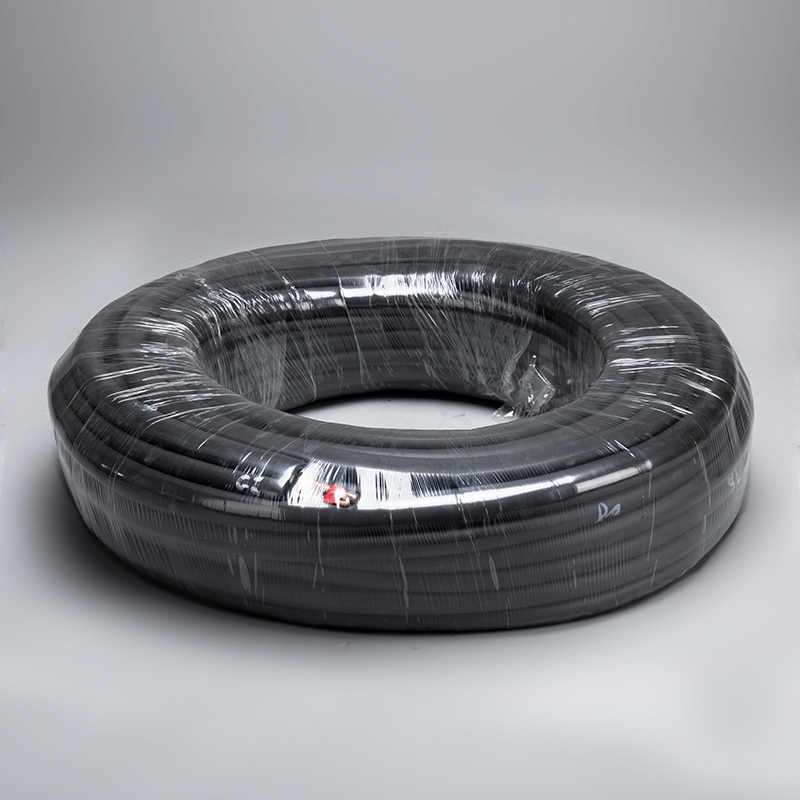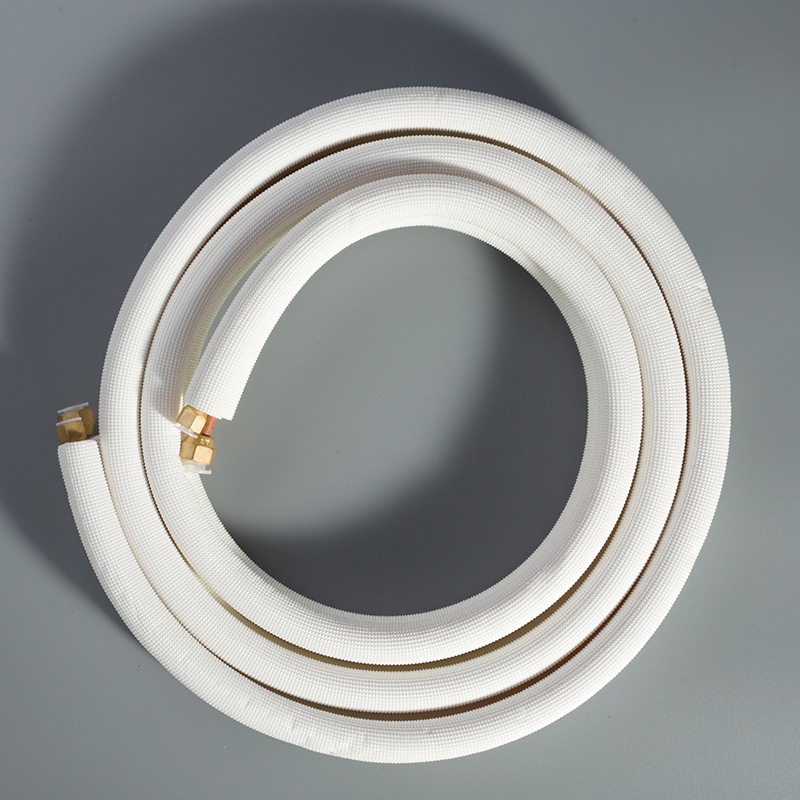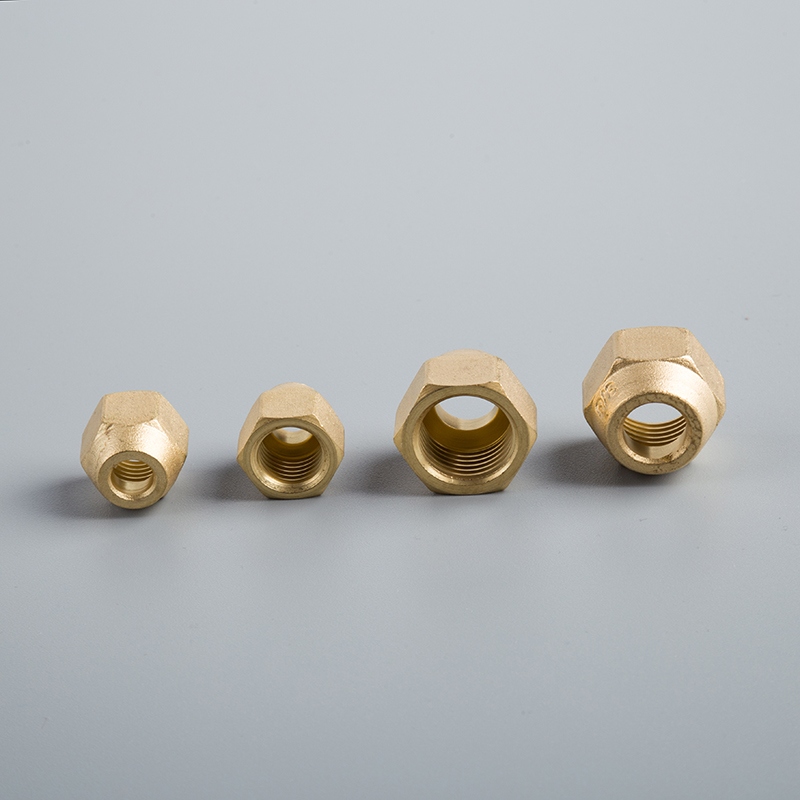Steps to Choose the Right Copper Pipe for Air Conditioning

Choosing the Right Copper Pipe for Air Conditioning is a critical decision that impacts the efficiency and longevity of HVAC systems. In this Steps blog post on Choosing the Right Copper Pipe for Air Conditioning, readers will uncover essential steps to make informed choices when selecting copper pipes for air conditioning installations. By understanding the benefits of copper pipes in enhancing energy efficiency and reducing maintenance costs, individuals can optimize their HVAC systems effectively.
Understanding Copper Pipes

Properties of Copper Pipes
Copper pipes, known for their durability, thermal conductivity, and corrosion resistance, are essential components in air conditioning systems. These pipes can withstand harsh conditions and provide efficient heat transfer within HVAC units.
Durability and Longevity
Copper pipes exhibit exceptional strength and resilience, making them ideal for long-term use in air conditioning installations. Their robust nature ensures a reliable performance over an extended period, contributing to the longevity of HVAC systems.
Thermal Conductivity
The thermal conductivity of copper pipes allows for efficient heat exchange, enhancing the overall energy efficiency of air conditioning units. This property enables quick cooling or heating processes, optimizing the performance of HVAC systems.
Corrosion Resistance
One of the standout features of copper pipes is their remarkable corrosion resistance. This quality prevents degradation over time, ensuring that the pipes maintain their structural integrity even in challenging environments.
Types of Copper Pipes
When selecting copper pipes for air conditioning applications, understanding the different types available is crucial to meet specific requirements effectively.
Type K, L, and M
Type K, Type L, and Type M copper pipes vary in thickness and are suitable for distinct purposes within HVAC systems. Each type offers unique advantages based on the level of durability required for a particular installation.
Soft vs. Hard Copper Pipes
The choice between soft and hard copper pipes depends on the flexibility needed during installation. While soft copper pipes are more malleable and easier to work with in tight spaces, hard copper pipes offer greater structural rigidity for specific system configurations.
Determining the Correct Diameter
When selecting copper pipes for air conditioning systems, determining the correct diameter is crucial to ensure optimal performance and efficiency. The importance of pipe diameter lies in its direct impact on system efficiency and the ability to avoid pressure drops during operation.
Importance of Pipe Diameter
Impact on System Efficiency
Maintaining the appropriate pipe diameter is essential for maximizing the efficiency of air conditioning units. A mismatched diameter can lead to inefficiencies in heat exchange, affecting the overall performance of the HVAC system.
Avoiding Pressure Drops
Choosing the right pipe diameter helps prevent pressure drops within the system. Pressure drops can result in reduced airflow and compromised cooling or heating capabilities, ultimately impacting comfort levels in indoor spaces.
How to Measure and Select the Right Diameter
Manufacturer's Recommendations
Following manufacturer's recommendations is key when determining the correct pipe diameter for air conditioning installations. Manufacturers provide guidelines based on system requirements and intended usage to ensure optimal performance.
Calculating Based on System Requirements
Calculating the ideal pipe diameter involves considering specific system requirements such as tonnage, room size, and installation layout. By evaluating these factors, you can determine the most suitable diameter that aligns with your HVAC needs.
Installation Considerations

Soldering Techniques
Copper pipe installations require precise soldering techniques to ensure a secure connection and optimal performance. The process involves meticulous attention to detail and the use of specialized tools and materials.
Tools and Materials Needed
Propane Torch: Used to heat the copper pipes evenly for soldering.
Lead-Free Solder: Ensures compliance with safety standards and prevents contamination.
Flux Paste: Facilitates the flow of solder and promotes a strong bond between the pipes.
Pipe Cutter: Essential for cutting copper pipes to the required length accurately.
Step-by-Step Soldering Process
Preparation: Clean the surfaces of the copper pipes thoroughly using a wire brush to remove any debris or oxidation.
Apply Flux: Coat the areas to be joined with flux paste to promote solder adhesion.
Heat Pipes: Use the propane torch to heat both pipes evenly until they reach the appropriate temperature for solder application.
Solder Application: Apply lead-free solder along the joint, allowing it to flow smoothly into the connection by capillary action.
Cooling: Allow the soldered joint to cool naturally without disturbing it to ensure a solid bond.
Compression Fittings
Compression fittings offer a convenient alternative for connecting copper pipes without requiring complex plumbing skills. These fittings are versatile and easy to install, making them suitable for various air conditioning applications.
When to Use Compression Fittings
When a leak-proof connection is essential in air conditioning systems.
In situations where disassembly may be necessary for maintenance or repairs without damaging the pipes.
Installation Steps
Cutting Pipes: Use a pipe cutter to trim copper pipes accurately before installation.
Deburring Edges: Smooth out any rough edges on cut pipes using a deburring tool for proper fitting.
Assembly: Slide compression nuts and rings onto each pipe end before inserting them into the fitting body.
Tightening: Securely tighten compression nuts by hand, followed by an additional quarter turn using wrenches for a leak-free seal.
Brazing Methods
Brazing provides a robust method for joining copper pipes in air conditioning systems, ensuring durability and leak-free connections that withstand high pressure and temperature variations.
Advantages of Brazing
Creates strong, permanent joints that can endure extreme conditions.
Offers superior sealing capabilities compared to other joining methods like soldering or compression fittings.
Safety Precautions and Procedures
Ventilation: Ensure proper ventilation in the workspace when brazing copper pipes due to fumes produced during heating.
Protective Gear: Wear appropriate safety gear such as gloves, goggles, and protective clothing to prevent burns or injuries.
Even Heating: Heat both pipe ends uniformly before applying brazing rod for consistent bonding strength.
Ensuring Quality and Cleanliness
Importance of Quality Copper Pipes
Copper pipes have been utilized in plumbing for decades due to their ability to withstand high temperatures and pressure. Copper is highly resistant to damage from UV rays, making it a reliable choice for both indoor and outdoor applications.
How to Identify High-Quality Pipes
Look for copper pipes with a consistent color and texture throughout the surface.
Check for any signs of dents, scratches, or irregularities that may indicate lower quality.
Ensure that the copper pipes are labeled with relevant industry standards and certifications for quality assurance.
Trusted Brands and Manufacturers
Copper piping from reputable brands like Brand X and Brand Y are known for their durability and reliability.
Seek recommendations from experienced professionals in the plumbing industry for trusted manufacturers of high-quality copper pipes.
Proper Cleaning of Copper Pipes
Maintaining cleanliness before installation is crucial to ensure optimal performance and longevity of copper pipes within air conditioning systems.
Cleaning Before Installation
Use a mild detergent solution to clean the outer surface of the copper pipes thoroughly.
Rinse the pipes with clean water to remove any residue or debris that could impact performance.
Dry the cleaned copper pipes completely before proceeding with installation to prevent corrosion or contamination.
Maintenance Tips for Longevity
Regularly inspect copper pipes for any signs of corrosion, leaks, or damage.
Implement preventive maintenance measures such as applying protective coatings to extend the lifespan of the copper piping.
Schedule professional inspections annually to address any potential issues early on and ensure continued efficiency.
Regulatory Requirements and Guidelines
Local and National Codes
Understanding Relevant Regulations
Comprehending the local and national codes governing copper pipe installations in air conditioning systems is crucial for ensuring compliance with industry standards.
Familiarize yourself with the specific regulations that outline the proper use of copper pipes, including guidelines on bending, brazing, and anti-corrosion measures.
Refer to legal documents or legislation that highlight the implications of adhering to these codes, emphasizing the importance of following best practices for optimal system performance.
Ensuring Compliance
Adhering to local and national codes when installing copper pipes in air conditioning systems is essential to maintain system efficiency and longevity.
Implement the recommended practices outlined in regulatory guidelines to ensure that copper pipes are installed correctly and function effectively.
Consult with professionals or experts in the field if there are any uncertainties regarding compliance with existing regulations.
In conclusion, making informed decisions when Choosing the Right Copper Pipe for Air Conditioning is paramount. By following key steps in selecting copper pipes, individuals can enhance the efficiency and longevity of their HVAC systems. Emphasizing adherence to guidelines and best practices ensures optimal performance. Consulting professionals if needed can provide valuable insights for successful installations. Ultimately, the benefits of proper copper pipe selection and installation extend beyond functionality to potential financial gains in home resale value.
See Also
Benefits of Opting for Copper Tubing in Air Conditioning
Importance of Copper Piping for Effective Air Conditioning
Key Factors in Selecting Proper Copper Pipe Size
The Impact of Copper Tubing on Air Conditioning Innovation
Advantages of Copper Piping in Air Conditioning Transformation


